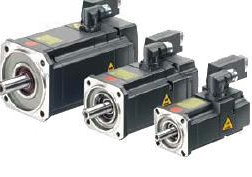
I have introduced the working principle of the servo motor before, and I believe everyone already knows about it. So how to select the servo motor? Please read the detailed introduction below!
In the modern electromechanical industry, complex movements are often encountered, which have a great impact on the power load of the motor. Servo drive equipment is the core of many electromechanical systems, so the selection of servo motors becomes particularly important. First, we need to select a motor that meets the given load requirements, and then select a suitable motor based on technical and economic indicators such as price, weight, volume, etc.
The selection process of servo motor is as follows:
1. First, calculate the load inertia and inertia matching. Taking Jinyi servo motor as an example, the inertia matching of some products can be up to 50 times, but in practice, the smaller the better, which is better for accuracy and response speed.
2. The next step is to convert the load torque on the motor shaft and calculate the acceleration and deceleration torque.
3. The second step is to confirm the speed and encoder resolution.
4. The next step is to select the cable. The encoder cable is twisted pair shielded. For Taiwanese products such as Jinyi servo, the value encoder is 6 cores and the incremental version is 4 cores.
5. It is to calculate and select the regenerative resistor. For the servo, it generally requires more than 2kw and needs to be configured externally.
Precautions:
The above only considers the power problem of the motor. For linear motion, it is shown by speed v(t), acceleration a(t) and required external force F(t). For rotational motion, it is shown by angular velocity (t), angular acceleration (t) and required external force F(t). Torque T(t) shows that they can all be expressed as a function of time, regardless of other factors.
Obviously, the power P motor of the motor should be greater than the peak power P peak required by the workload, but this alone is not enough. Power in the physical sense includes two parts: torque and speed, but in practical transmission mechanisms they are subject to limited.
Use peak value, T peak value to indicate value or peak value. The speed of the motor determines the upper limit of the reduction ratio of the reducer, n upper limit = peak value, / peak value, similarly, the torque of the motor determines the lower limit of the reduction ratio, n lower limit = T peak value / T motor, , if n lower limit is greater than n upper limit, select The motor is inappropriate.
Conversely, a feasible range of gear ratios between upper and lower limits can be determined by a broad analogy for each type of motor. Only using peak power as the principle for selecting motors is insufficient, and the calculation of the transmission ratio is very cumbersome.



















